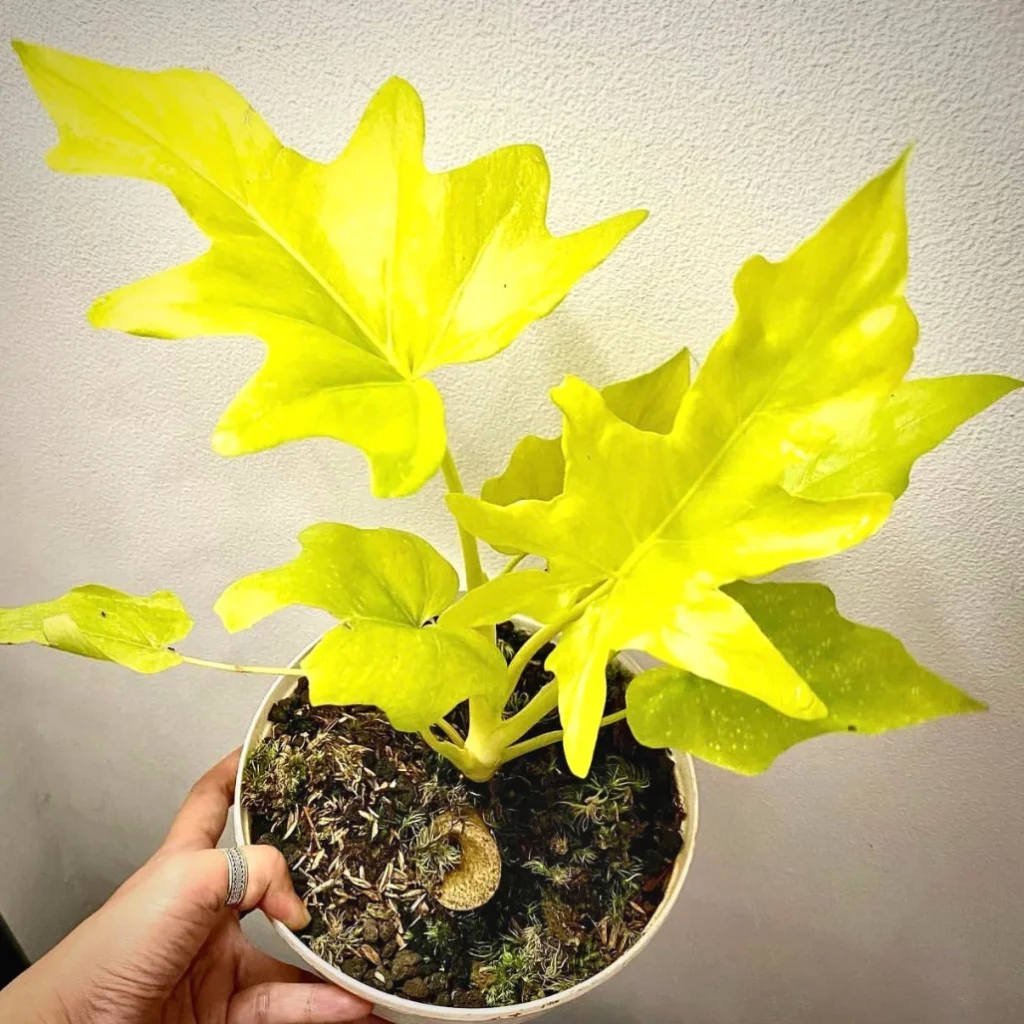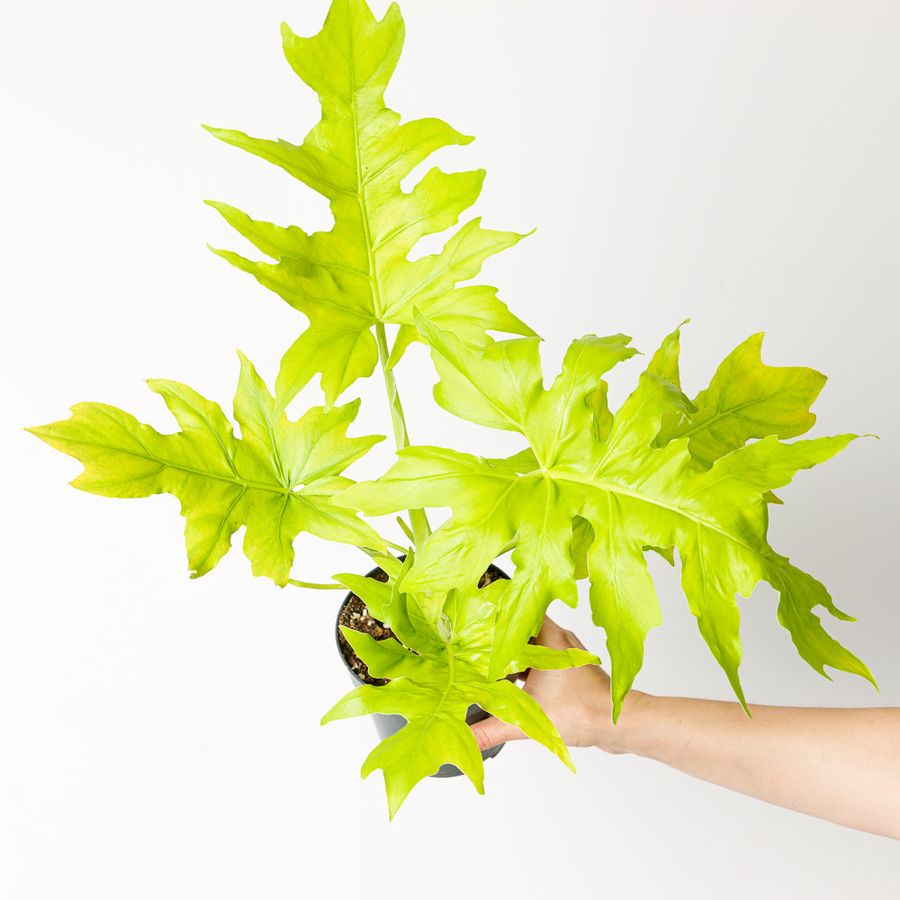1.Introduction
Have you ever come across a plant that just takes your breath away with its sheer beauty? Well, the Philodendron warszewiczii flavum is one such plant. This article will provide a comprehensive guide into the world of this fascinating plant.

2. A Brief Overview of Philodendrons
Before we delve deeper into the specifics of the Philodendron warszewiczii flavum, let’s briefly touch upon the family it belongs to – the Philodendrons. They are among the most popular, adaptable, and stunning houseplants in the world, offering a diverse range of leaf shapes, sizes, and hues.
3. The Uniqueness of Philodendron warszewiczii flavum
This specific variety, the Philodendron warszewiczii flavum, stands out due to its unique features. It’s known for its splendid yellow flowers – a rarity among philodendrons.
4. Origin and Habitat
The Philodendron warszewiczii flavum originates from the rainforests of Central and South America, where it thrives in the understory with filtered sunlight.
5. Appearance and Characteristics
Understanding the unique features of the Philodendron warszewiczii flavum is key to appreciating its beauty.
5.1. Leaves
The leaves are large, heart-shaped, and deep green, providing a lush, tropical feel.
5.2. Flowers
The plant is adored for its stunning yellow spathes, which are indeed a captivating sight.
5.3. Growth Habit
This philodendron typically grows as an epiphyte in its natural habitat, but it’s also capable of adapting to pot culture.

6. Caring for Philodendron warszewiczii flavum
Proper care ensures a healthy, thriving plant.
6.1. Light Requirements
This philodendron prefers bright, indirect light. Too much direct sunlight can scorch its leaves.
6.2. Watering
Water it thoroughly and allow the top layer of the soil to dry out between waterings.
6.3. Soil and Fertilizer
A well-draining soil mix is essential. Regular feeding during the growing season with a balanced liquid fertilizer is beneficial.
6.4. Temperature and Humidity
Maintaining a temperature range of 65-80°F (18-27°C) is ideal for the Philodendron warszewiczii flavum. It thrives in high humidity, so misting the leaves or placing the plant on a humidity tray can help recreate its natural habitat.
“Add a touch of tropical elegance to your space with the Philodendron warszewiczii flavum. Shop now to bring this unique and vibrant plant into your home!”
7. Common Issues and How to Solve Them
Like any plant, the Philodendron warszewiczii flavum may face certain issues. Here are a few common problems and their solutions:
- Yellowing Leaves: This could indicate overwatering. Adjust your watering routine and make sure the soil is well-draining.
- Pests: Keep an eye out for pests such as spider mites and mealybugs. Regularly inspect the leaves and treat with appropriate insecticides if necessary.
- Leaf Curling: Curling leaves may be a sign of low humidity. Increase humidity levels around the plant by misting or using a humidifier.

Where to buy Philodendron warszewiczii? Benefits from importing plants from Thailand
- Shipping: Door to door shipping, fast and safe with Dragon Courier
- Biodiversity: Thailand is known for its rich biodiversity, including a wide variety of aroid species. This diversity allows importers to access a broad range of unique and exotic aroid plants.
- Quality and Health of Plants: The suitable climate helps the plants grown here stay healthy and of high quality.
- Cost-Effectiveness: Due to favorable growing conditions and efficient production methods, Thai aroid plants can often be more cost-effective compared to those from other countries.
- Access to Hybrid Varieties: Thai growers are often involved in the development of new hybrid aroid varieties, offering unique plants that may not be available from other sources.
Philodendron species are the most sought after by aroid plant lovers
8. Propagation Techniques
If you wish to expand your collection or share the beauty of the Philodendron warszewiczii flavum with others, propagation is an excellent option. The plant can be propagated through stem cuttings, allowing you to create new plants and maintain its unique characteristics.
9. Philodendron warszewiczii flavum in Home Decor
With its vibrant foliage and unique flowers, the Philodendron warszewiczii flavum makes for a stunning addition to any indoor space. It adds a touch of tropical elegance to living rooms, offices, or even large conservatories. Its beauty and low-maintenance nature make it a popular choice among plant enthusiasts.
10. Conclusion
In conclusion, the Philodendron warszewiczii flavum is a remarkable plant that captivates with its yellow flowers and lush green leaves. With proper care and attention to its specific needs, this philodendron can thrive in indoor settings, bringing a tropical vibe to your home or office.
11. Frequently Asked Questions
Q1: How often should I water my Philodendron warszewiczii flavum? A1: Water thoroughly when the top layer of soil is dry, but avoid overwatering as it can lead to root rot.
Q2: Can I place my Philodendron warszewiczii flavum in direct sunlight? A2: It prefers bright, indirect light. Too much direct sunlight can scorch its leaves, so it’s best to provide filtered or indirect light.
Q3: How do I propagate the Philodendron warszewiczii flavum? A3: You can propagate it through stem cuttings. Take a healthy stem cutting with a node, place it in water or well-draining soil, and keep it warm and moist until roots develop.
Q4: What should I do if my Philodendron warszewiczii flavum’s leaves are turning yellow? A4: Yellowing leaves can indicate overwatering. Adjust your watering routine and ensure the soil has good drainage to prevent waterlogged roots.
Q5: Can I grow the Philodendron warszewiczii flavum outdoors? A5: While it can tolerate some outdoor conditions, it is best suited for indoor environments where you can control its exposure to light, temperature, and humidity.





















